Bernese Mountain Dog
Bernese Mountain Dog Food
| Male | Female |
|---|---|
| Height | Height |
| 64 - 70 cm | 58 - 66 cm |
| Weight | Weight |
| 36 - 52 kg | 31 - 43 kg |
| Life Stage | |
|---|---|
| Adult | |
| 8 months to 5 years | |
| Mature | Senior |
| 7 years to 10 years | From 10 years |
| Baby | |
| Birth to 2 months | |
| Male | Female |
|---|---|
| Height | Height |
| 64 - 70 cm | 58 - 66 cm |
| Weight | Weight |
| 36 - 52 kg | 31 - 43 kg |
| Life Stage | |
|---|---|
| Adult | |
| 8 months to 5 years | |
| Mature | Senior |
| 7 years to 10 years | From 10 years |
| Baby | |
| Birth to 2 months | |
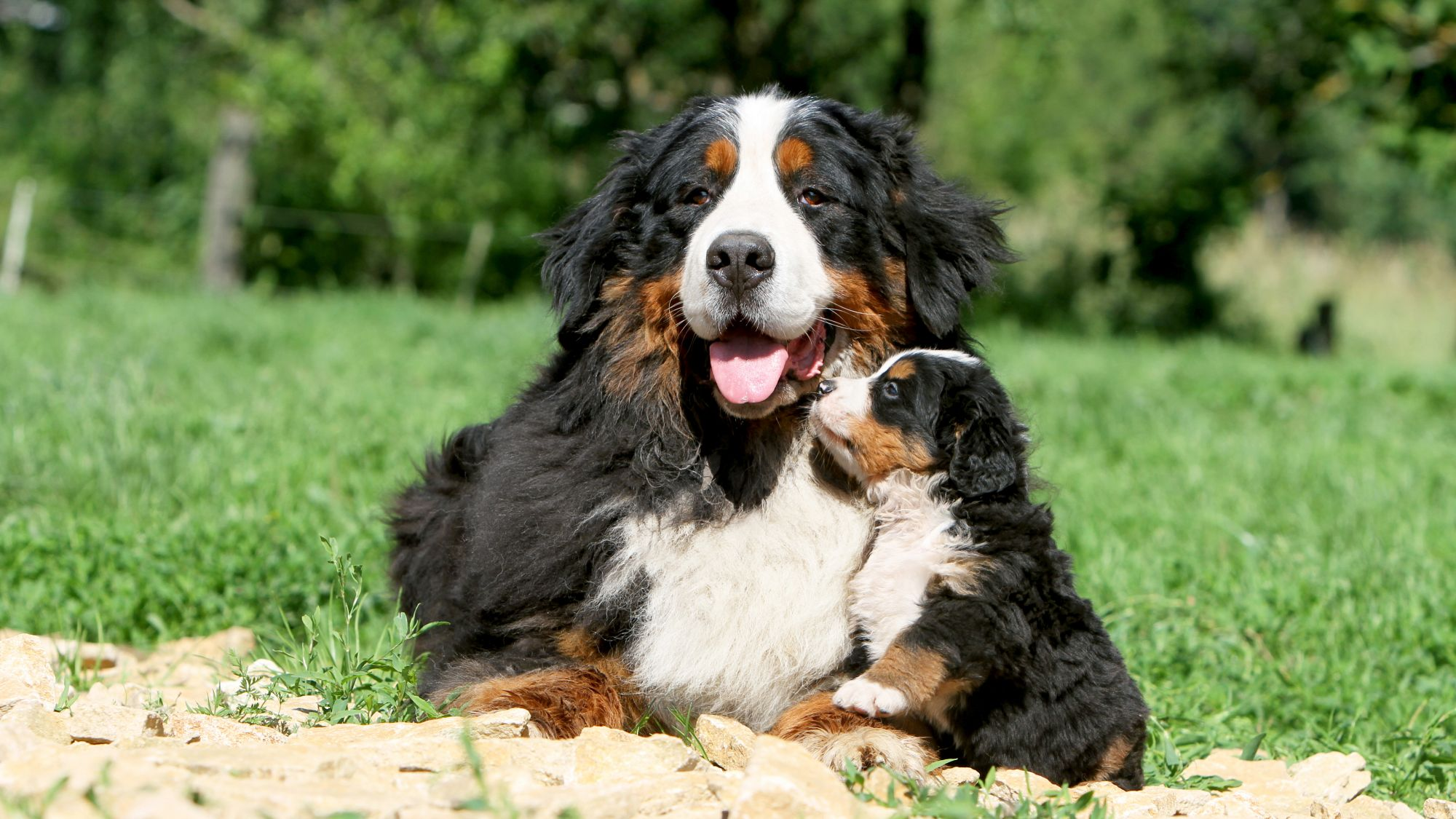
Get to know the Bernese Mountain Dog
All you need to know about the breed
This very powerful breed may be a force physically but when it comes to their temperament, the Bernese Mountain Dogis a gentle giant. Their pleasant face mirrors the highlydocile disposition found within. The breed is extremely attached to their owners -repeat, extremely attached -and although can initially be standoff-ish with strangers, does warm up quickly. Justlook at those large and tender eyes! One thing is for sure: cuddling is neveroptional.
With a history as a working dog on farms in the Swiss Alps, the Bernese Mountain Dogis very content when occupied. Don’t be shy about handing off the housework: this sturdy dog can handle most any rugged chore humans will give them, from hauling carts full of debris to dragging heavy items. What a great working partner! Their enjoyment of domestic life means puttering about the yard suits them just fine. A large size -the males can weigh up to 52 kilograms -means lounging around the house is welcome too.
The hardy Bernese Mountain Dogbreed does best when in cold settings, and is not the dog to have in a southern or tropical locale. Their thick Teddy Bear-like coat is their hallmark, with its colouring of black on the body accented by a white chest and rust markings.A signature to the breed, as is their consistently contented face.
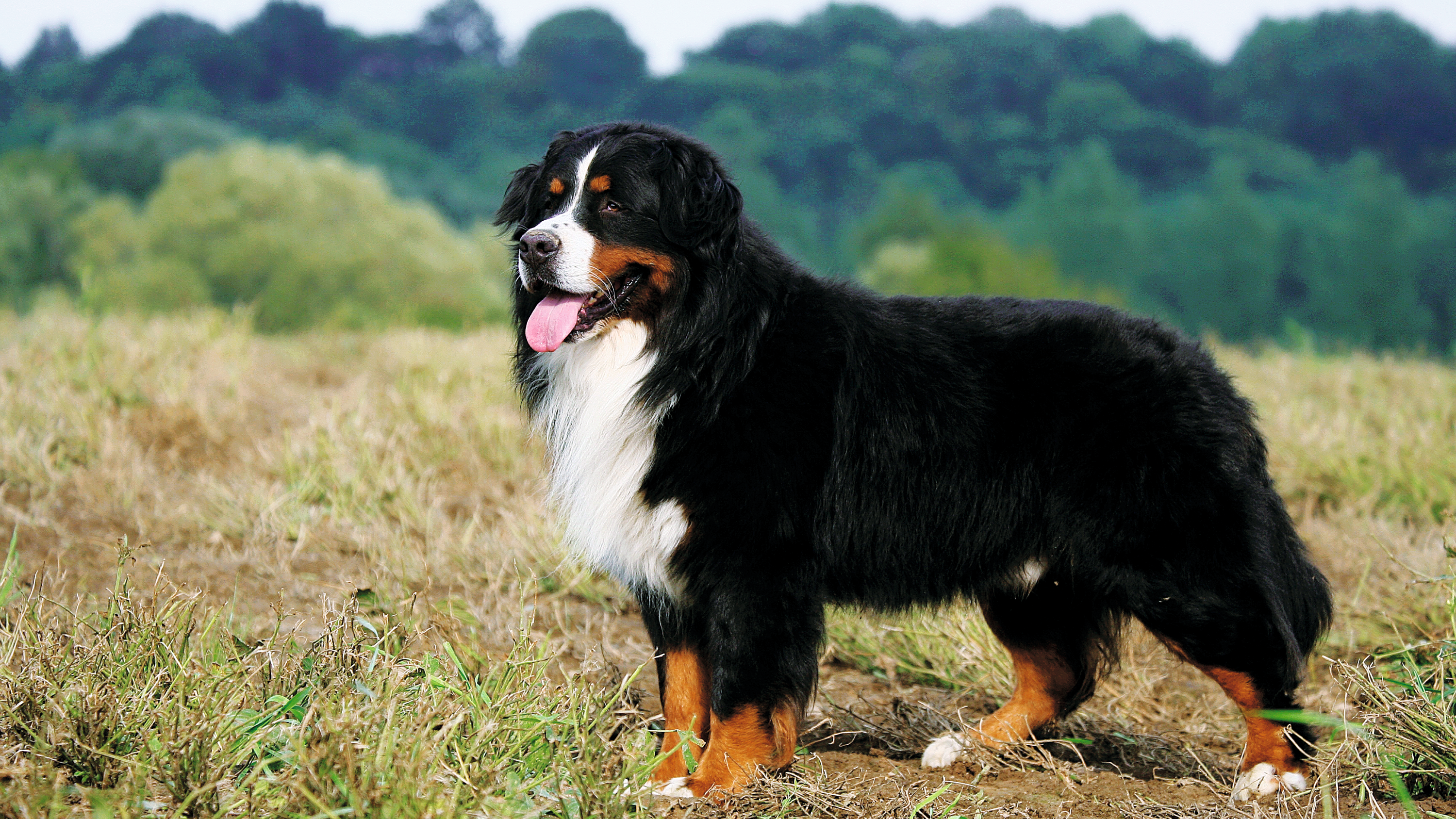
2 facts about Bernese Mountain Dogs
1. Don’t mistake girth for aggression
The Bernese Mountain Dog has astrapping build but also a hugely docile temperament. This is a dog bred to haul carts on farms and for droving -the practice of walking livestock over long distances. Bernese Mountain Dogsare in reality incredibly good-natured.
2. Keep them mobile
As with other large breeds, the Bernese Mountain Dog can experience arthritis as a result of their larger limbs. Joint supplements can relieve the physical distress and keep the breed healthy. Hip dysplasia can also be a problem since they are so prone to work and play. Daily walks should help with mobility. A good vet will arm you with tips.
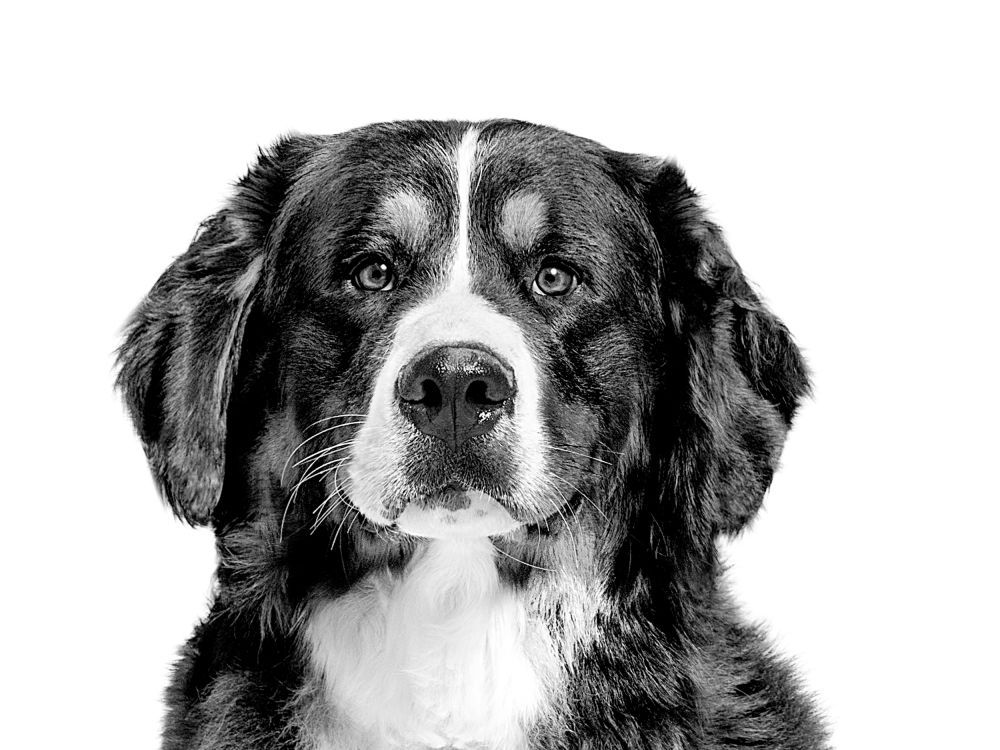
History of the breed
The Bernese Mountain Dog was originally bred for use on farms and on the vast pastures found in the Canton of Bern in the Swiss Alps. Home to the country’s dairy region, thus large herds of cattle, a dog with broad muscular limbs needed to be developed for use in herding livestock. The strong breed became one used as guard dogs in the region as well, protecting cattle from natural predators. The Bernese Mountain Dogis known to be able to pull many times his own weight. The dog’s official name followed suit as the Bernese Mountain Dog gained in prominence as, you guessed it, a mountain dog.
With the onset of industrialisation came the breed’s decline toward the late 1800s, kicking admirers into motion to preserve the cherished breed. Professor Albert Heim led the way, founding the Swiss Breed Club in 1907. The first known Bernese landed in the United States in 1926 and the American Kennel Club registered the first dog 11 years later.
The Bernese Mountain Dog’s large size may be due to their descent from larger Mastiff breeds brought into Switzerland by the Romans over 2,000 years ago. They were crossed with flock guard dogs found in the region, resulting in the dog we know today, a hardy one perfectly suited for mountain climes.
From head to tailPhysical characteristics of Bernese Mountain Dog
.
.
.
.
.
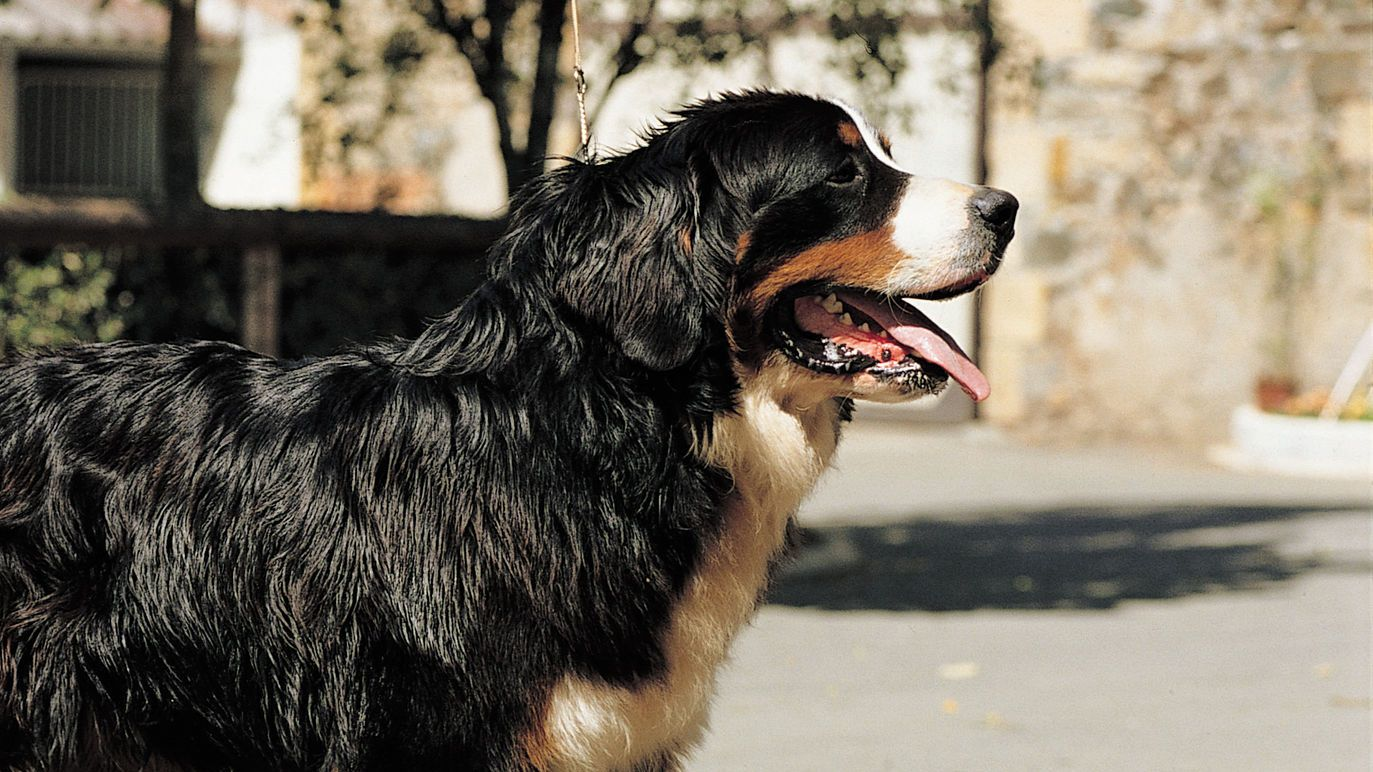
Things to look out for
From specific breed traits to a general health overview, here are some interesting facts about your Bernese Mountain Dog
Healthy diet, healthier dog
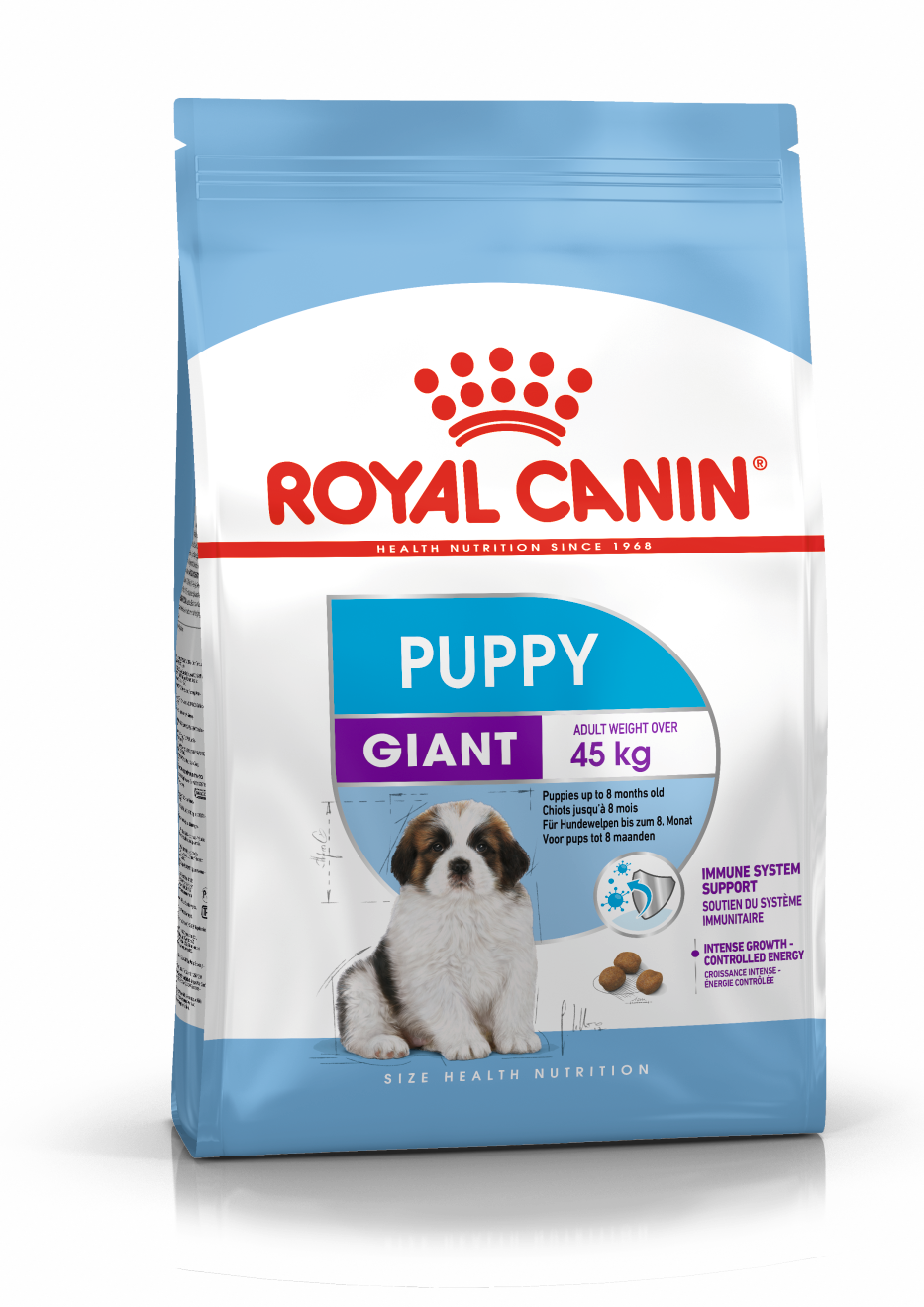
When choosing food for a Bernese Mountain Dog, there are many factors to consider: Their age, lifestyle, activity level, physical condition, and health including potential sickness or sensitivities. Food provides energy to cover a dog’s vital functions, and a complete nutritional formula should contain an adjusted balance of nutrients to avoid any deficiency or excess in their diet, both of which could have adverse effects on the dog. As giant-sized breed dogs have a higher risk of a condition called gastric dilatation volvulus (GDV), where the stomach becomes overstretched and rotated because of excess gas, usually caused by overfeeding during a meal, it’s recommended to split the daily allowance into three meals for puppies and try to keep this routine into their adult years.
Clean and fresh water should be available at all times to support good urinary regularity. In hot weather and especially when out exercising, bring water along for your dog’s frequent water breaks. Energy intake may also have to be adapted to the climatic conditions. A dog that lives outdoors in winter will have increased energy requirements.
The following recommendations are for healthy animals. If your dog has health problems, please consult your veterinarian who will prescribe an exclusively veterinary diet.
A Bernese Mountain Dog puppy’s requirements, in terms of energy, protein, minerals, and vitamins, are greater than those of an adult dog. They need energy and nutrients to maintain their body, but also to grow and build it. During their growth, a Bernese Mountain Dog puppy’s immune system develops gradually. A complex of antioxidants – including vitamin E – can help support their natural defences during this time of big changes, discoveries, and new encounters. Their digestive functions are different from an adult Bernese Mountain Dog’s, too: Their digestive system is not mature yet so it is important to provide highly-digestible proteins that will be effectively used for the building of bones, tissues, and organs. Prebiotics, such as fructo-oligosaccharides, can support digestive health by helping balance the intestinal flora, resulting in good stool.
Giant-sized puppies, whose growth period is long and intense, are especially susceptible to skeletal and joint problems, including limb defects, bone deformities, and joint lesions.
The first part of growth (up to 8 months) is mainly concerned with bone development, although the muscles also start to grow. This means that a puppy that eats too much (takes in too much energy) will put on too much weight and grow too quickly. A food with an adjusted calorie content to support a high growth rate while at the same time avoiding excess weight gain will help minimise these risks. A balance of energy and minerals (calcium and phosphorus) during this first phase of growth will contribute to bone mineralisation in order to support bone consolidation and the development of healthy joints. Although the calcium content in the food needs to be increased, giant-sized breed puppies are more sensitive to excessive calcium intake. It’s important to understand that adding any ingredients to a complete food formulated for the growth phase is at best unnecessary and at worst dangerous for the animal, unless prescribed by a veterinarian.
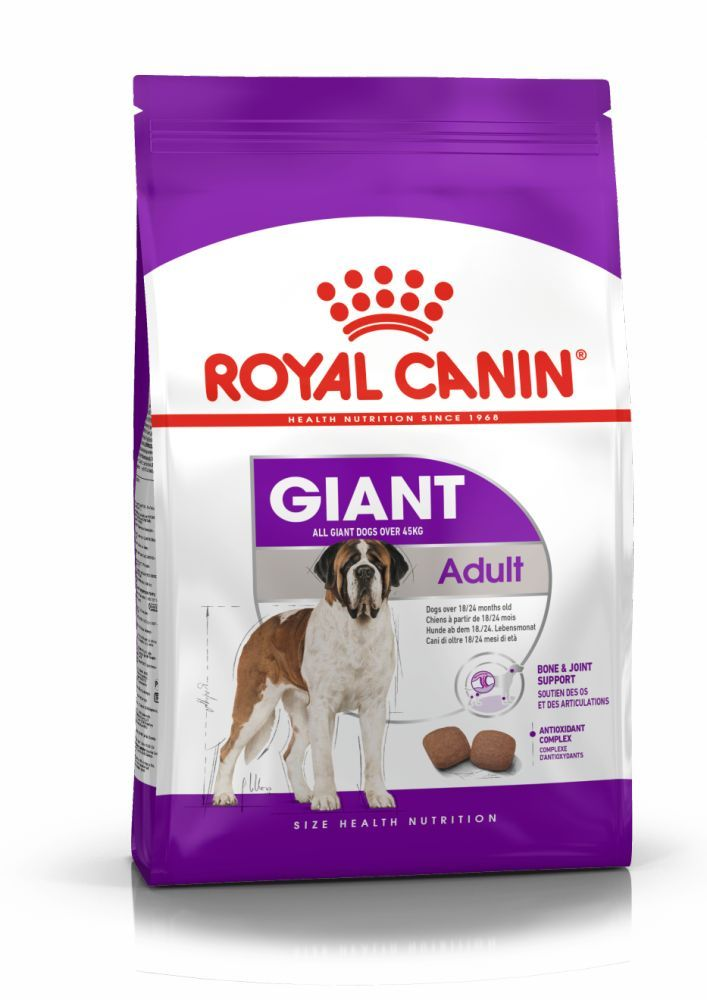
As many giant-sized breed dogs, Bernese Mountain Dogs are prone to digestive sensitivity, and their body weight can create stress on their joints throughout their lifetime. Bernese Mountain Dogs’ nutritional needs then should include high-quality protein and a balanced supply of dietary fibre to help promote optimal digestibility, as well as glucosamine, chondroitine, and antioxidants to help support the health of their bones and joints. A formula enriched with omega-3 fatty acids, such as EPA and DHA, will help maintain healthy skin. An adapted taurine content is also important to support healthy heart function.
It is important to avoid feeding Bernese Mountain Dogs human foods or fatty snacks. Instead, reward them with kibble taken from their daily meal allowance, and strictly follow the feeding guidelines written on the package.
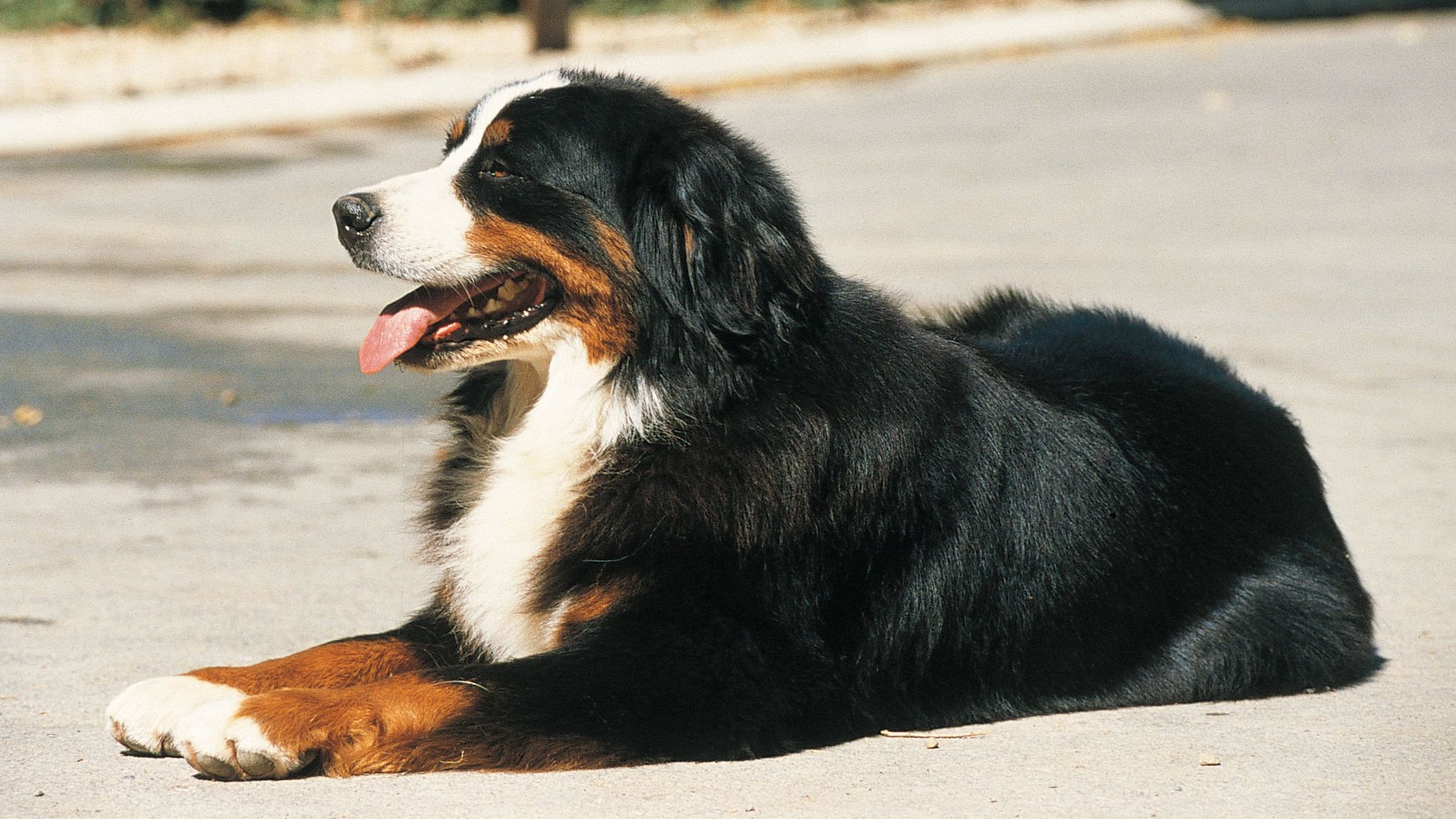
Caring for your Bernese Mountain Dog
Grooming, training and exercise tips
At times a sensitive stomach
<p class="ellipsis">Bernese Mountain Dogs are big animals, which means there’s a lot to love. But one trait that can plague larger breeds is a tendency toward bloat, or a condition called gastric dilatation and volvulus (GDV), an at-times serious condition that is known to require surgery. When a dog bloats, their stomach can turn on itself and fill with gas. Although sudden, the condition is very medically treatable, and one of the best ways to prevent it is to adhere to proper feeding. Mealtime should be routine and calm. Watch for any odd behaviour from your Bernese Mountain Dog, such as swelling, restlessness, or sudden signs of discomfort. Regular vet visits will also help to keep the condition -including any vomiting, retching, anxious behaviour, ptyalism, or lethargy -at bay.<br /></p>
<span id="docs-internal-guid-9adbcef7-7fff-c1de-dbe6-9884eac09557"></span>
<p dir="ltr" style="margin-top: 0pt; margin-bottom: 0pt;">Grooming the Bernese Mountain Dog is a pleasure, given the pleasant demeanor of this breed and their resplendent long coat. The Bernese Mountain Dog breed has a longer outer coat and wooly undercoat, which sheds fairly normally. Brushing a few times a week is enough, and need only be done daily during twice-yearly shedding periods in the spring and fall. Dogs that walk on hard surfaces (such as tarmac or pavement) usually wear their nails down naturally however it’s important to keep their nails trimmed to minimise problems larger breeds can potentially have with balance.<br /></p>
<p><span id="docs-internal-guid-249c889d-7fff-264a-e958-2a4b0ce60996" style="background-color: transparent;">The highly obedient Bernese Mountain Dog is a breedthat learns quickly. Very bonded to their master, this is a dog that’s all too content to (almost) satisfy your every whim. The Bernese Mountain Dogwas bred as a working dog so carrying out orders is second-nature. Given their incredibly affectionate manner, they can feel vulnerable if owners raise their voice. Bernese Mountain Dog puppy trainingshould happen early and consistently for best results.</span></p>
At times a sensitive stomach
<p class="ellipsis">Bernese Mountain Dogs are big animals, which means there’s a lot to love. But one trait that can plague larger breeds is a tendency toward bloat, or a condition called gastric dilatation and volvulus (GDV), an at-times serious condition that is known to require surgery. When a dog bloats, their stomach can turn on itself and fill with gas. Although sudden, the condition is very medically treatable, and one of the best ways to prevent it is to adhere to proper feeding. Mealtime should be routine and calm. Watch for any odd behaviour from your Bernese Mountain Dog, such as swelling, restlessness, or sudden signs of discomfort. Regular vet visits will also help to keep the condition -including any vomiting, retching, anxious behaviour, ptyalism, or lethargy -at bay.<br /></p>
<span id="docs-internal-guid-9adbcef7-7fff-c1de-dbe6-9884eac09557"></span>
<p dir="ltr" style="margin-top: 0pt; margin-bottom: 0pt;">Grooming the Bernese Mountain Dog is a pleasure, given the pleasant demeanor of this breed and their resplendent long coat. The Bernese Mountain Dog breed has a longer outer coat and wooly undercoat, which sheds fairly normally. Brushing a few times a week is enough, and need only be done daily during twice-yearly shedding periods in the spring and fall. Dogs that walk on hard surfaces (such as tarmac or pavement) usually wear their nails down naturally however it’s important to keep their nails trimmed to minimise problems larger breeds can potentially have with balance.<br /></p>
<p><span id="docs-internal-guid-249c889d-7fff-264a-e958-2a4b0ce60996" style="background-color: transparent;">The highly obedient Bernese Mountain Dog is a breedthat learns quickly. Very bonded to their master, this is a dog that’s all too content to (almost) satisfy your every whim. The Bernese Mountain Dogwas bred as a working dog so carrying out orders is second-nature. Given their incredibly affectionate manner, they can feel vulnerable if owners raise their voice. Bernese Mountain Dog puppy trainingshould happen early and consistently for best results.</span></p>
7/7
All about Bernese Mountain Dogs
All about Bernese Mountain Dogs
One would be hard-pressed to find a better-natured breed than the Bernese Mountain Dog. They are fantastic in a family setting, with a calm, placid nature that, once trained, is especially great for being around children. The breed is patient and friendly -almost needy, one could say -and very very devoted to their owner. The Bernese Mountain Dog breed does not do well being alone and can be cautious with strangers. Go slow with training and the breed will thrive.
Unfortunately, a rather short one. Shorter lifespans can be the norm for large breeds and for pure breeds, who also tend to have more issues with bones, joints, and blood. A Bernese Mountain Dog average lifespan is estimated at 6 to 10 years, and sometimes can exceed even that. Many breeders are working to change the outcome of this beloved breed.
Suggested Breeds
Read more on this topic
Sources
- Veterinary Centers of America https://vcahospitals.com/;
- Royal Canin Dog Encyclopaedia. Ed 2010 and 2020
- Banfield Pet Hospital https://www.banfield.com/
- Royal Canin BHN Product Book
- American Kennel Club https://www.akc.org/
Like & share this page